Posted March 6, 2019 by Nicky in Reviews / 0 Comments
 Pale Rider, Laura Spinney
Pale Rider, Laura Spinney
Pale Rider is about the 1918 flu pandemic known as “Spanish flu”: the fact that it killed many more people than the Great War did is a well-known fact now, and this particular pandemic is credited with making scientists realise the dangers of a global health crisis like this — and the likelihood that it could and would happen again.
I’ll confess, I didn’t think I’d learn that much about the flu from reading this book, having already read John M. Barry’s The Great Influenza, but in fact there was a lot here that was new to me. Not so much in understanding the disease itself — if Barry’s book didn’t do that, studying for my exams certainly did — but in understanding the impact it had on the world, and particularly on non-Western countries. There’s a lot here that’s new to me about China and Russia, for instance, whereas I feel like The Great Influenza focused much more on the American side of things.
There’s also, I feel, more of an attempt to understand the social and political effects of the pandemic, rather than just the medical and scientific.
However, my end feeling is the same: influenza is a fascinating topic, and if it doesn’t scare you (in a measured informed way that leads to taking sensible precautions like getting the flu vaccine every year), it should. Spinney has a common-sense approach to it all — there’s a lot of things that need to align to make a pandemic, and Spinney doesn’t overstate the likelihood of that happening, but she does lay out the risks and emphasise the need for data collection and disease surveillance. Hear hear!
Rating: 4/5
Tags: book reviews, books, history, non-fiction, science
Posted March 2, 2019 by Nicky in Reviews / 0 Comments
 Fayke Newes, Derek J. Taylor
Fayke Newes, Derek J. Taylor
Fayke Newes looks like a gimmicky book, and it’s true that it lacks a references section entirely, so it’s difficult to evaluate the depth of the research. What I read tallies with what I already know, but it’s impossible to trust a serious non-fiction book without references or at least some “further reading”, and it raises my eyebrow a little that the book suggests teaching children to distinguish real news from puffed up misinformation… and that book does not itself have the basics I would consider important for evaluating whether a piece of writing is accurate. (Though admittedly I’ve fallen into this trap myself, and need to start adding sources on my science blog posts.)
Taking it with a pinch of salt, though, it’s an interesting survey of the press vs power — the media vs the mighty, in the other alliteration it uses a lot — from Henry VIII to Trump. It discusses how the press have clashed with governments in the past, discussing how the media has made and broken politicians… and how they’ve been complicit in hiding things from the people during situations such as wartime. This is pretty much the main theme of the book: is the press speaking truth about power to inform the people, or aligning with it in order to deceive them (regardless of the intent behind the compliance)?
It’s odd, given that the book ends with a paean to a long history of marvellous unbiased reporting, that mostly the incidents it mentions sound very much to me like the press is mostly biased and prone to falling in with the wishes of the rich and powerful. Taylor suggests that unbiased, well-trained reporters are going to save us in this age of misinformation — in the concluding chapter of a book with example after example of the press being owned by the rich and dictated by their demands, or cheerfully complying with government bans to send home encouraging untruths during wartime, etc, etc.
I think we do need some well trained and unbiased reporters we can trust to tell us the facts. I’m not convinced by his arguments into believing that those reporters exist, or rather that when people with that ambition do exist, they have a platform and are able to tell us a damn thing people with power don’t want us to know.
Interesting book, but has several blind spots about the implications of its own content.
Rating: 3/5
Tags: book reviews, books, history, non-fiction
Posted February 27, 2019 by Nicky in Reviews / 0 Comments
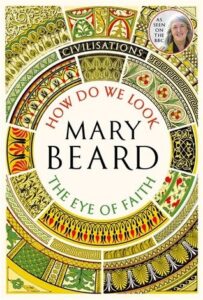 How Do We Look / The Eye of Faith, Mary Beard
How Do We Look / The Eye of Faith, Mary Beard
This volume is a slightly odd book in that the two halves aren’t really related, except by being companions to the same TV series, Civilisation. The first half looks at how the human body has been portrayed throughout history — so both what we look like and how we see ourselves — and the second half discusses portraying the divine, iconoclasm, and art history through that lens.
It’s a pretty quick read, with illustrative photos: this is a companion to a TV series, after all, not an in-depth academic treatise. That shows in the relatively broad, shallow approach it necessitates, but it’s nonetheless an interesting book. Mary Beard’s a good writer and respected academic, and the book does come with Further Reading and References, so it’s not as slight as it might look.
Nonetheless, there’s not much to say beyond that! Both topics are interesting, and I’d be glad to read more in-depth discussions — by Mary Beard or someone else.
Rating: 3/5
Tags: book reviews, books, history, non-fiction
Posted February 12, 2019 by Nicky in Reviews / 0 Comments
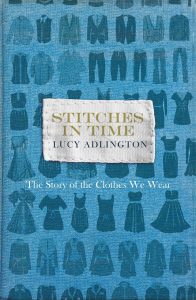 Stitches in Time, Lucy Adlington
Stitches in Time, Lucy Adlington
Stitches in Time is a delightful look at the clothes we wear and how they’ve developed over time, from the general fit of women’s clothes down to the specifics of fashion. A lot of it I knew already, partly from the BBC’s Great British Sewing Bee (I cannot wait for a new season of that! and oh hey, it starts tonight!) and partly from other books, but it was still a charming read and a nice break from the awful things that happen in fiction. Adlington writes clearly and sometimes wittily, and it’s a good tour through history in general as well at times, contextualising what exactly drove fashion.
Rating: 4/5
Tags: book reviews, books, history, non-fiction
Posted February 7, 2019 by Nicky in Reviews / 0 Comments
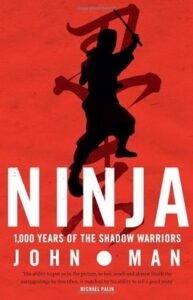 Ninja, John Man
Ninja, John Man
Ninja is another travelogue-ish, easy to read history of a broad and fascinating topic, in this case the history and afterlife of ninjas in Japanese culture. It felt more scatterbrained than Man’s other books, and was more of a chore to read; I wasn’t really impressed, and although there were some very informative chapters about actual ninjas and what they did, there’s a lot of fluff about traditions and stories about ninjas that didn’t really add up to much.
Of Man’s books, I definitely wouldn’t recommend this; if there’s a better book out there about ninjas and their history, I think I’d actually like to read it, please.
Rating: 2/5
Tags: book reviews, books, history, non-fiction
Posted February 4, 2019 by Nicky in Reviews / 2 Comments
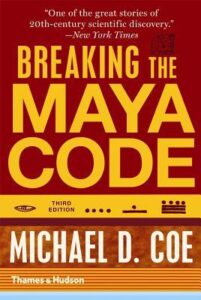 Breaking the Maya Code, Michael D. Coe
Breaking the Maya Code, Michael D. Coe
This book is, I’ll warn people right up front, also a history of how the Mayan specialists in the West failed to break the “Maya code” for far too long, due to petty jealousies and larger than life characters. Quite often Coe sketches a mini-biography of someone who was involved in the decipherment (or more often, the failure of decipherment); sometimes the biography isn’t so mini.
Still, I think it’s better written than his other book on the Mayans, which I read not that long ago — it certainly worked better for me, anyhow. Perhaps because there are glimpses of the scholars and larger than life characters who put in the work, erroneous though it often was.
The book is illustrated, both with full reproductions and sketches. For me, the full-page spreads of Mayan characters were meaningless, but I’m sure it would appeal a lot to some people to be able to have a crack at it themselves. I know I’m not visually inclined enough, so I tended to skip the examples and such, but they are there and I’m sure more visually inclined people could pick out some of the features Coe discusses.
Rating: 4/5
Tags: book reviews, books, history, non-fiction
Posted January 29, 2019 by Nicky in Reviews / 3 Comments
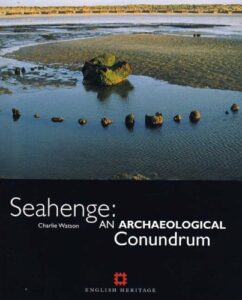 Seahenge: An Archaeological Conundrum, Charlie Watson
Seahenge: An Archaeological Conundrum, Charlie Watson
A short and beautifully illustrated book on Seahenge, mostly focusing on the practical issues of how it was made, how it was found, how it was excavated, and the hard facts discovered since from analysis of it. There’s less concentration on the speculations about a ritual landscape in the area, etc, than you find in Pryor’s book on the same site, and a lot more illustrations and photographs. The two complement each other, I think, though I am reading them quite far apart — this is much more ‘just the facts, sir’ than Pryor’s book, while Pryor did the work of interpretation.
If you’re just looking for some background on Seahenge, you’re definitely safe with this one!
Rating: 4/5
Tags: book reviews, books, history, non-fiction
Posted January 21, 2019 by Nicky in Reviews / 3 Comments
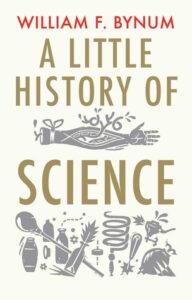 A Little History of Science, W.F. Bynum
A Little History of Science, W.F. Bynum
If you don’t actually know much about the history of science, this book might well be for you; for me, it was painfully obvious, hitting exactly the topics I expected, skimming over what I expected it to skim. A worse crime, however, is that the author simply wasn’t accurate: if you’re going to write a non-fiction book, it’s important to make sure you don’t speak beyond your research.
It does not take much research to find out that Egyptian hieroglyphs and Chinese characters are not pictographic representations of language. (To be perfectly accurate, some of the characters echo in form the thing they name; a cow head shape might mean the word cow, for instance. However, the languages also contain phonetic characters.)
I didn’t read beyond that. On that point, I knew the author was wrong — on a subject that isn’t even a particular area of expertise for me; how, therefore, could I trust him to have done his research about anything else? If we’re talking deeply technical details, that’s different, but it is widely understood that Egyptian hieroglyphs and Chinese characters are not solely logographic. There’s too little time for something where I distrust the research and editing and I’m bored.
Rating: 1/5
Tags: book reviews, books, history, non-fiction, science
Posted January 8, 2019 by Nicky in Reviews / 2 Comments
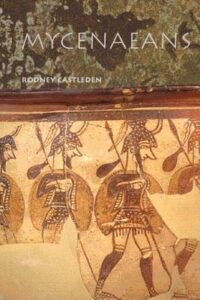 The Mycenaeans, Rodney Castleden
The Mycenaeans, Rodney Castleden
This is a mostly textbookish sort of primer on the Mycenaeans: a bit more up to date than the Penguin classic on the Greeks I read recently, by Kitto, but not necessarily in line with the latest ideas as I remember them either. He relies quite heavily on Homer as a historical source; although I know there is certainly some historicity in Homer (the descriptions of armour and other artefacts are often correct in Homer for when we think the Trojan War occurred, rather than for when the epic was written down, suggesting that it does have a good deal of content from being originally composed nearer in time to the actual events), it’s also full of Gods and magic — not usually considered key markers of accurate history writing.
It was basically what I expected from something of a rather textbooky nature, though: dry at times, expanding on some not-necessarily-interesting (to the casual reader, anyway) points, and generally taking a long time to get where it was going. I wouldn’t say it’s a bad book, but I wouldn’t particularly recommend it to those without a deep interest in the details.
Rating: 2/5
Tags: book reviews, books, history, non-fiction
Posted December 16, 2018 by Nicky in Reviews / 1 Comment

The Roman Forum, David Watkin
Most books about the Roman Forum would tend to focus on the Roman period itself, but this rather fascinatingly did a survey through time — not only the classical Roman period origins of the Forum, but the transformations over the years since. The authors strongly feels the importance of seeing the Forum as a living place, somewhere that developed since the time of the Roman Empire, so he spends much time lovingly describing the churches built on the site as well. It’s an approach I definitely appreciate: it’s ridiculous to try and stop the clock of the Forum at the end of the Empire, or to think it was always just one thing throughout that period either. We can’t turn the clock back, so the Forum is best embraced for what it is, rather than attempting to freeze it in time.
I did find this book fascinating, but my one quibble is that the author is almost aggressively against archaeology. He complains frequently about excavation in the forum. And yes, some of it has been done destructively, and I do disagree with trying to tear down anything that was built since Constantine reigned (or whatever your chosen marker point might be). But at the same time, archaeology can be of great value, and I would also be sad if the Forum were to be barred to archaeologists.
Rating: 3/5
Tags: book reviews, books, history, non-fiction
 Pale Rider, Laura Spinney
Pale Rider, Laura Spinney








